
views
Built-in Display

Open the Mac Apple Apple Menu. Your Mac’s resolution should already be optimized for its built-in display, but you can change the resolution using the preset options in the Displays menu. Start by clicking the Mac Apple Apple Menu in the top left corner of your screen. If you can’t see the Apple Menu because of your current resolution settings, press ⌘ + Space on your keyboard to launch Spotlight, then type in system preferences. Click the System Preferences icon when it comes up in the search results.
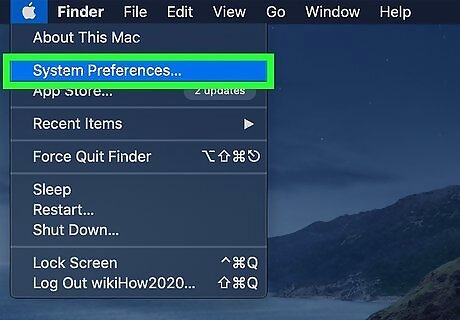
Select System Preferences. Click System Preferences… near the top of the Apple Menu. This will open a new window.
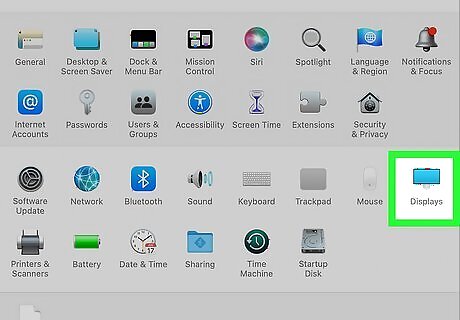
Click Displays. Select Displays from the System Preferences window. The icon looks like a blue computer monitor.

Toggle on the Scaled radio button. By default, the resolution should be set to Default for Display. Next to the Resolution heading, click the radio button next to Scaled to view other resolution options.
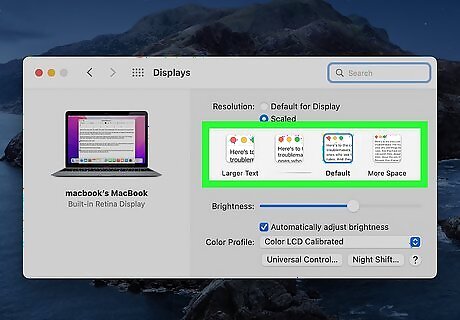
Select your preferred scale option. Once you select Scaled, you’ll see a series of thumbnails showing different resolution options. Choose the one that fits your needs best. For example, select Larger Text (1024 x 640) to display text, apps, icons, and other objects on your screen at a larger scale. If you’d rather have more space on your screen, choose an option like More Space (1680 x 1050) to make text, windows, icons, and other objects on your screen look smaller.
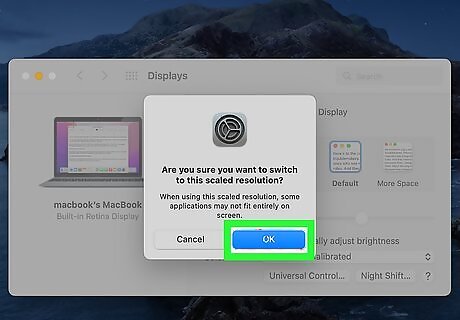
Click OK to confirm your selection. Depending on the resolution you select, a dialog box may pop up asking you if you’re sure you want to change your display resolution. Click OK to confirm your choice or Cancel to exit the dialog box without making any changes. This dialog only pops up if you choose a scale that is likely to hide parts of your screen, such as the Larger Text scale option. Otherwise, the changes are automatically applied when you click on the resolution you want.
External Display

Connect your external display. If you’re using an external display, such as a monitor or a TV, you can adjust the resolution using the System Preferences menu on your Mac. Start by connecting the display to your computer. Depending on what type of Mac you are using, you can do this by: Plugging the display into your HDMI or Thunderbolt port. Plugging the display into your Mac using an adapter that supports DisplayPort Alt Mode, Thunderbolt 3, or Thunderbolt 4. Connecting to the display wirelessly using AirPlay.

Click on the Mac Apple Apple Menu. Once your external display is connected, open the Mac Apple Apple Menu in the top left corner of your screen.
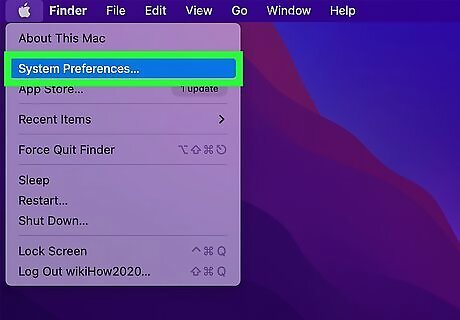
Open System Preferences. Select System Preferences… from the menu. A System Preferences window will pop up.
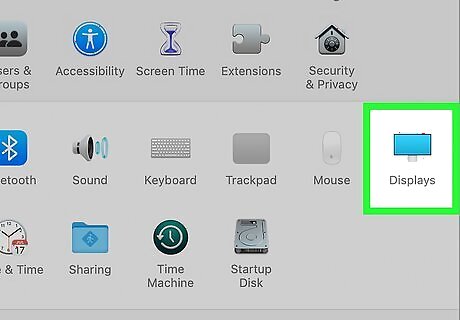
Select Displays. In the System Preferences menu, click the Displays button. It looks like a blue computer monitor.
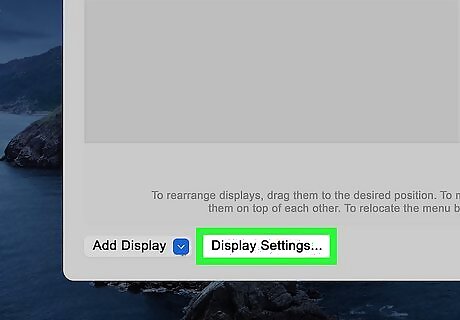
Click Display Settings. Once you add a new display, you will see this additional option in the Displays menu. Click the Display Settings… button to change your resolution and make other adjustments.
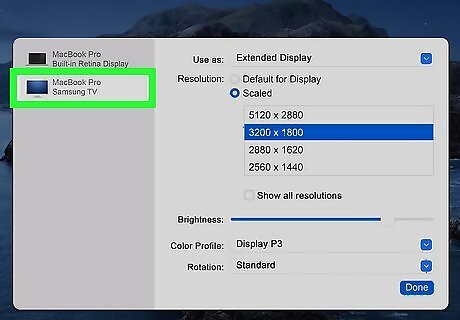
Choose your display from the sidebar. In the Display Settings dialog box, click the display you want to adjust in the menu on the left side of the window.

Select the resolution you want from the Scaled pop-up menu. Depending on what kind of device you are using as an external monitor, you may see an option to adjust the resolution. The resolution should be automatically optimized for the device selected in the Optimize for dropdown menu. To change the resolution: Click the radio button next to Scaled. Click on the scaled resolution you want from the thumbnails that appear below the Scaled option. Depending on the option you select, the resolution may change immediately, or a dialog box may pop up asking you to confirm your selection.
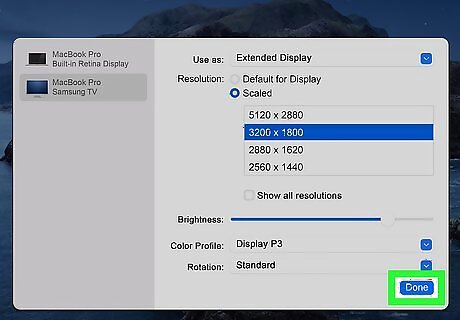
Click Done to confirm your selection. When you’ve chosen the resolution you want, click Done to close the Display Settings dialog box.
Low-Resolution Mode (Big Sur and Earlier)

Quit the app you’d like to view in low-resolution mode. Some apps may not display properly at your Mac’s default resolution. In Mac OS 11 (Big Sur) and earlier Mac operating systems, it is possible to run apps in low resolution mode, which may improve how they look on your screen. If you’re already running the app, quit it so you can relaunch it in low-resolution mode. As of September 2022, low-resolution mode is not available in Mac OS 12 (Monterey).
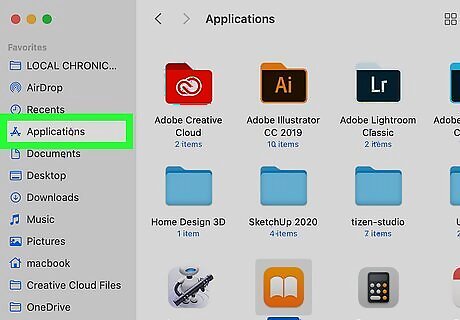
Open the Applications folder. Once you’ve quit the app, launch a Mac Finder Finder window and click on Applications in the side menu.
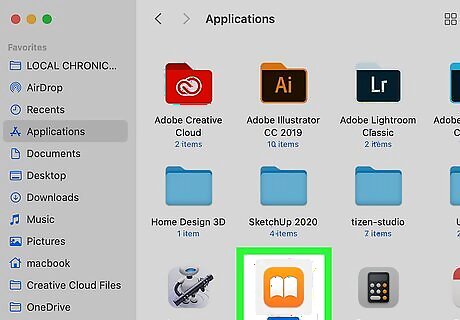
Click the app once to select it. Locate the app you want to run in low-resolution mode in the Applications folder. Select the app by clicking it once, but don’t launch it.
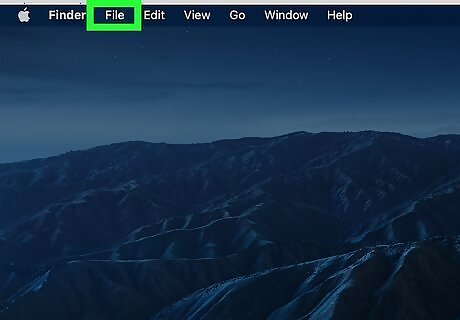
Open the File menu. With the app still selected, click the File menu at the top of the screen.
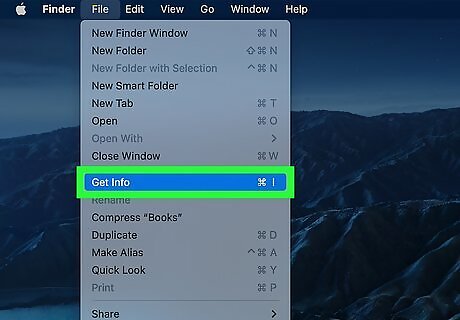
Select Get Info. In the File menu, click on Get Info. This will launch a dialog box with information about the app. You can also open the Get Info dialog box by pressing ⌘ Command+I with the app selected.
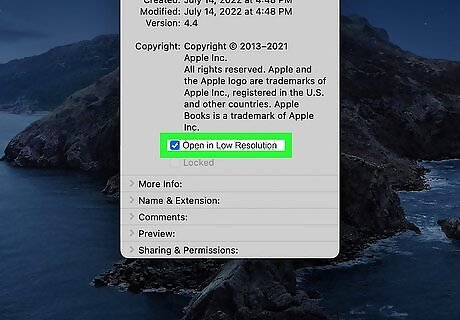
Check the box next to Open in Low Resolution. In the Get Info window, look for an option to Open in Low Resolution. Click the box next to this option to turn it on. Depending on which operating system you’re running, you might not see this option. Some apps are also automatically set to run in low-resolution mode.

Close the Get Info window. Once you’ve made your selection, click the red Close button in the top left corner of the Get Info window to close the dialog.
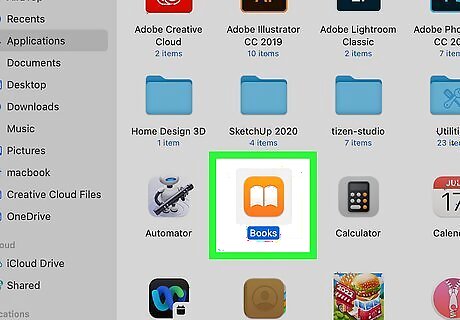
Re-launch the app. After you close the Get Info window, double-click the app to open it again. It should now run in low-resolution mode.
Troubleshooting
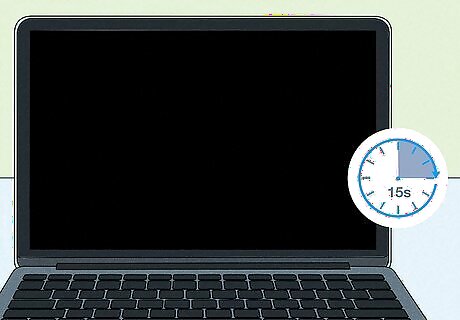
Wait 15 seconds if your screen goes black after changing the resolution. If you selected a resolution that isn’t supported, you might see a black screen after changing the resolution. If this happens, wait 15 seconds to see if your screen resets automatically.

Press Esc if the resolution doesn’t reset. If waiting doesn’t work, touch the Esc key. This should revert your screen’s resolution back to your previous selection.
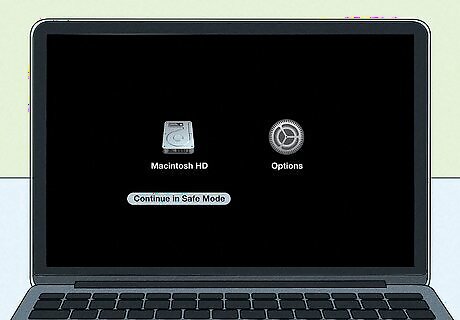
Restart your Mac in Safe Mode if you still can’t reset your display. In some cases, you may need to reset the resolution in Safe Mode. To do this: Open the Mac Apple menu and select Shut Down. Wait 10 seconds after your computer finishes shutting down. If your Mac is Intel-based, restart your computer and quickly press and hold the ⇧ Shift key. Let go of the ⇧ Shift key as soon as you see the Login window. If you have a Mac with Apple silicon, press and hold the Power button until you see the Startup Options window. Then, press ⇧ Shift, select Continue in Safe Mode, and let go of ⇧ Shift.

Open the Mac Apple Apple Menu once your Mac starts. After your Mac starts up in Safe Mode, click the Mac Apple Apple Menu in the top left corner of your screen.
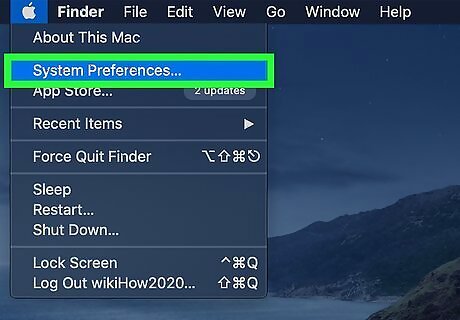
Select System Preferences. Click System Preferences in the menu to launch the System Preferences window.
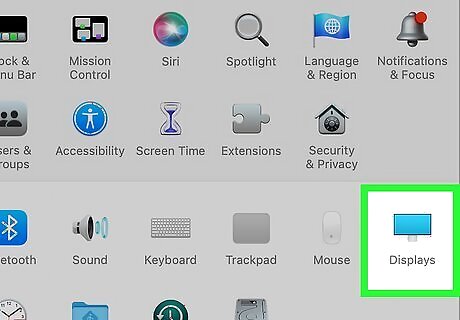
Click Displays. In System Preferences, click on the Displays icon. It looks like a blue computer monitor.
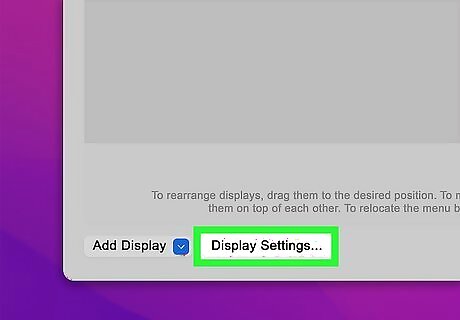
Select Display Settings. In the Displays window, click Display Settings or Display, depending on your OS.
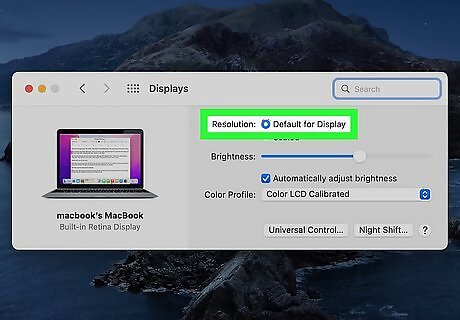
Choose Default for Display. Next to the Resolution header, click the radio button next to Default for Display. This should reset your computer back to its default screen resolution.
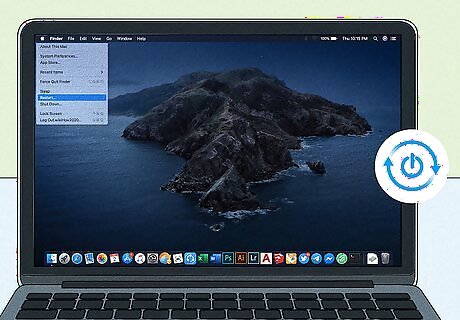
Restart your Mac. Once you’ve reset your resolution, restart your Mac as you normally would.

















Comments
0 comment